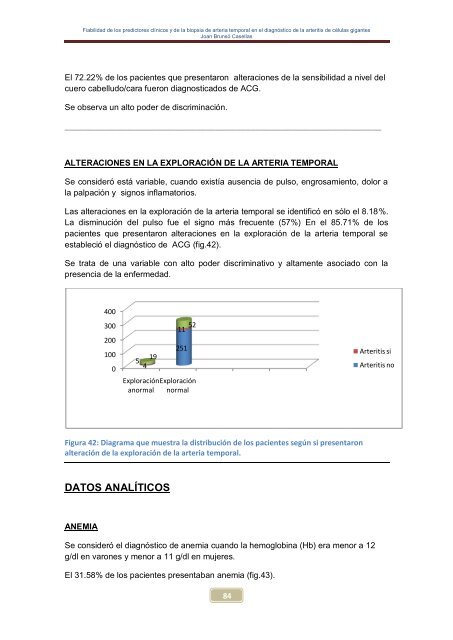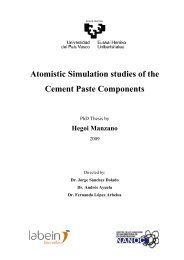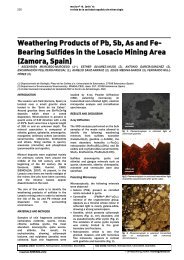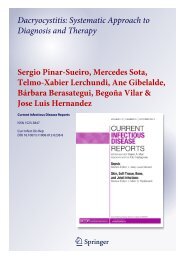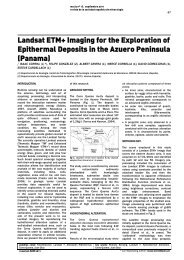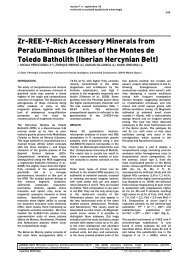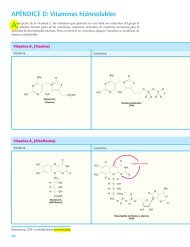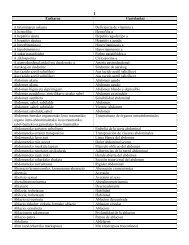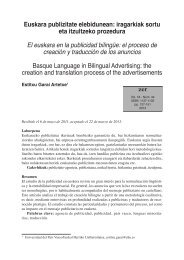Fiabilidad de los predictores clínicos y de la biopsia de arteria ...
Fiabilidad de los predictores clínicos y de la biopsia de arteria ...
Fiabilidad de los predictores clínicos y de la biopsia de arteria ...
You also want an ePaper? Increase the reach of your titles
YUMPU automatically turns print PDFs into web optimized ePapers that Google loves.
<strong>Fiabilidad</strong> <strong>de</strong> <strong>los</strong> <strong>predictores</strong> <strong>clínicos</strong> y <strong>de</strong> <strong>la</strong> <strong>biopsia</strong> <strong>de</strong> <strong>arteria</strong> temporal en el diagnóstico <strong>de</strong> <strong>la</strong> arteritis <strong>de</strong> célu<strong>la</strong>s gigantes<br />
Joan Brunsó Casel<strong>la</strong>s<br />
El 72.22% <strong>de</strong> <strong>los</strong> pacientes que presentaron alteraciones <strong>de</strong> <strong>la</strong> sensibilidad a nivel <strong>de</strong>l<br />
cuero cabelludo/cara fueron diagnosticados <strong>de</strong> ACG.<br />
Se observa un alto po<strong>de</strong>r <strong>de</strong> discriminación.<br />
_______________________________________________________________<br />
ALTERACIONES EN LA EXPLORACIÓN DE LA ARTERIA TEMPORAL<br />
Se consi<strong>de</strong>ró está variable, cuando existía ausencia <strong>de</strong> pulso, engrosamiento, dolor a<br />
<strong>la</strong> palpación y signos inf<strong>la</strong>matorios.<br />
Las alteraciones en <strong>la</strong> exploración <strong>de</strong> <strong>la</strong> <strong>arteria</strong> temporal se i<strong>de</strong>ntificó en sólo el 8.18%.<br />
La disminución <strong>de</strong>l pulso fue el signo más frecuente (57%) En el 85.71% <strong>de</strong> <strong>los</strong><br />
pacientes que presentaron alteraciones en <strong>la</strong> exploración <strong>de</strong> <strong>la</strong> <strong>arteria</strong> temporal se<br />
estableció el diagnóstico <strong>de</strong> ACG (fig.42).<br />
Se trata <strong>de</strong> una variable con alto po<strong>de</strong>r discriminativo y altamente asociado con <strong>la</strong><br />
presencia <strong>de</strong> <strong>la</strong> enfermedad.<br />
Figura 42: Diagrama que muestra <strong>la</strong> distribución <strong>de</strong> <strong>los</strong> pacientes según si presentaron<br />
alteración <strong>de</strong> <strong>la</strong> exploración <strong>de</strong> <strong>la</strong> <strong>arteria</strong> temporal.<br />
DATOS ANALÍTICOS<br />
ANEMIA<br />
400<br />
300<br />
200<br />
100<br />
0<br />
19<br />
5<br />
4<br />
52<br />
11<br />
251<br />
Exploración Exploración<br />
anormal normal<br />
Se consi<strong>de</strong>ró el diagnóstico <strong>de</strong> anemia cuando <strong>la</strong> hemoglobina (Hb) era menor a 12<br />
g/dl en varones y menor a 11 g/dl en mujeres.<br />
El 31.58% <strong>de</strong> <strong>los</strong> pacientes presentaban anemia (fig.43).<br />
84<br />
Arteritis si<br />
Arteritis no


